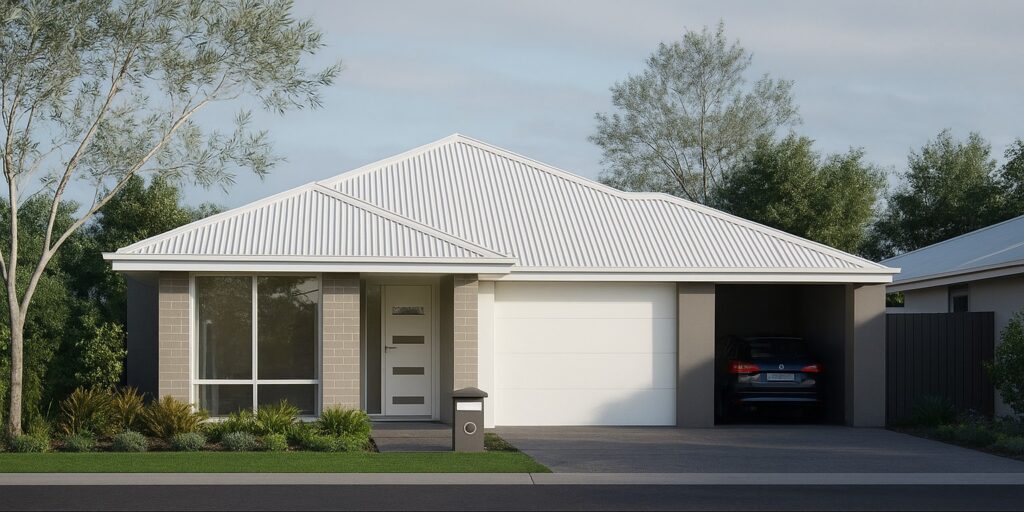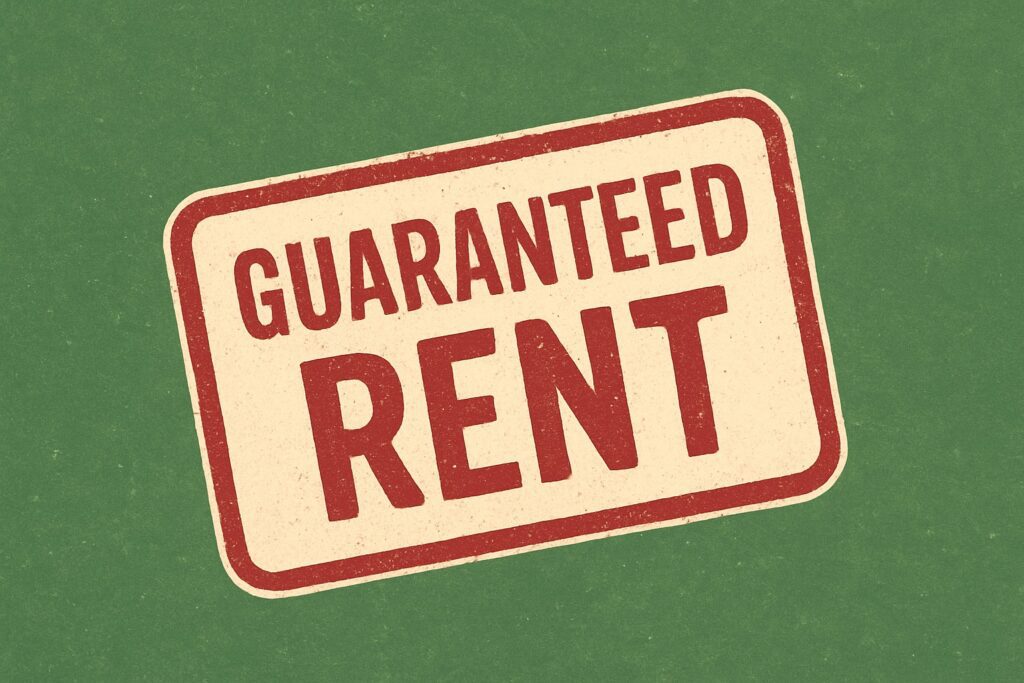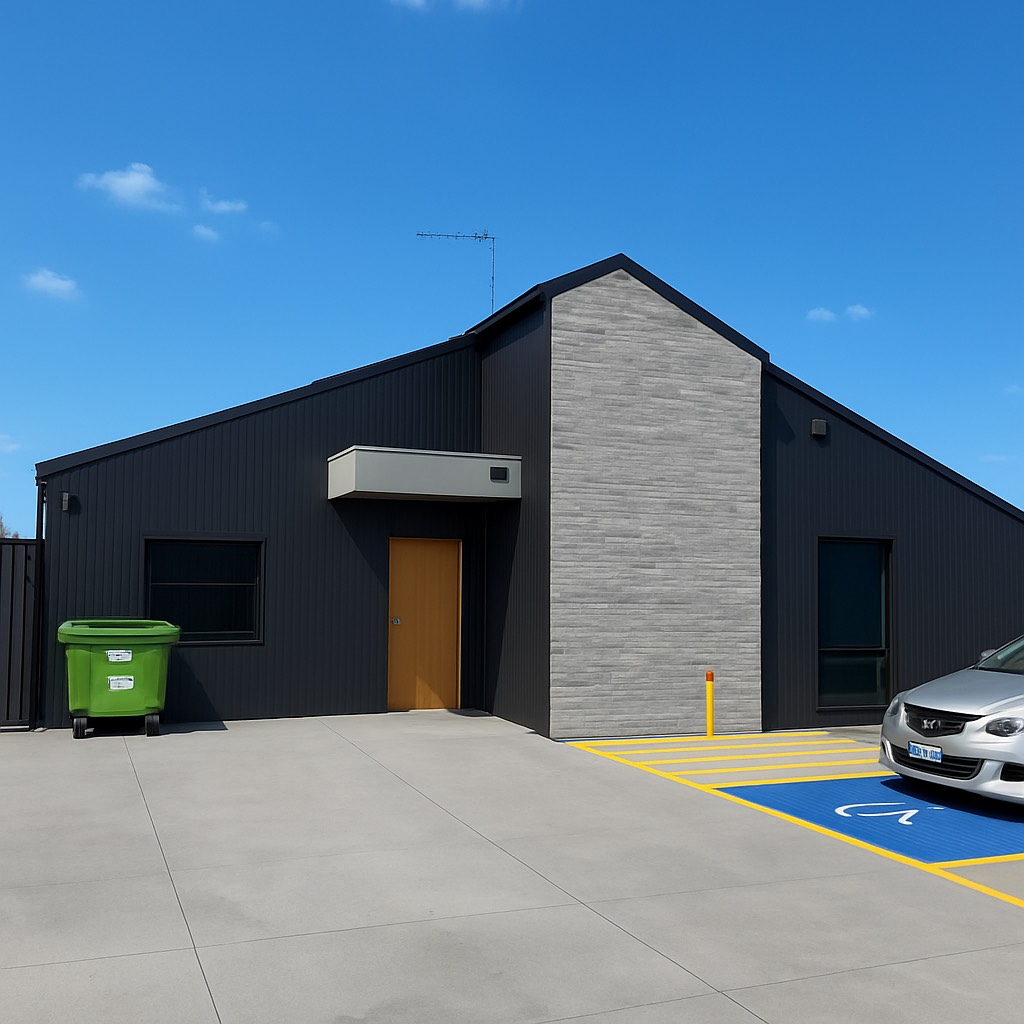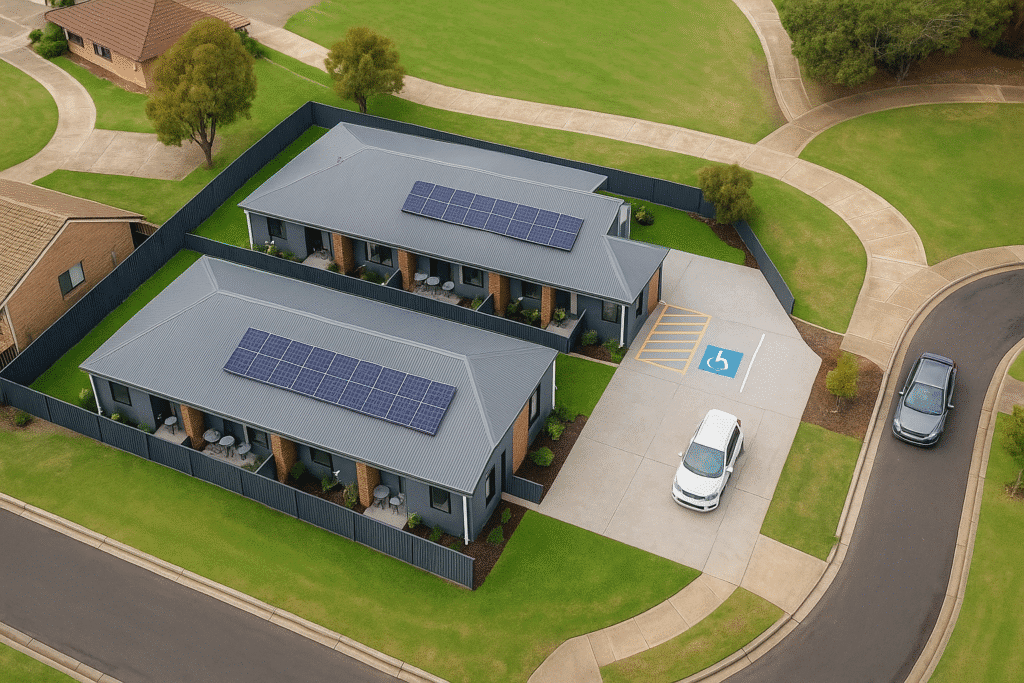
Many investors are drawn to property by the idea of capital growth. Buy now, hold for long enough, and prices will rise. That’s the pitch—and to a degree, it’s true. But capital growth cannot be your only strategy if you’re serious about building wealth in today’s market.
Here’s why that mindset limits your potential—and what smarter investors are doing instead.
The Lazy Default: House and Land Packages
There’s an easy option that’s pitched everywhere: house and land packages in greenfield estates. They’re advertised as “set and forget” investments, promising long-term growth in emerging areas.
But here’s the thing: they’re usually overpriced. You’re paying a premium for land in an area that hasn’t earned it yet. Developers mark up the land because it’s part of a package—and investors pay because it seems easier than doing the groundwork themselves.
Yes, the area will likely grow over time. But so will most suburbs across the country. The real question is whether you’re getting the best return on your capital, not just any return.
In new estates, every house looks almost the same. There’s a lot of supply. And that means tenants have plenty of choice—and no reason to pay top dollar. Don’t assume high rents just because there’s a rental crisis. There’s a crisis in places people actually want to live, like Sydney, Brisbane city, the Gold Coast or Melbourne’s inner and middle suburbs. Not in outer-ring housing estates built yesterday.

Instant Equity Beats Waiting for Growth
If you look at what the developers are doing—not what they’re selling—you’ll start to see the opportunity. They buy big blocks of land, subdivide, and sell off the lots at a markup. Why not do the same?
Take this real example.
A savvy investor picked up a 1,500 sqm knockdown-rebuild block of land on Melbourne’s outskirts for around $800,000. He subdivided it into two blocks—around 750 sqm each—instantly increasing the value. Each side, now worth about $500,000, generated instant equity of roughly $200,000.
Then he built two high-end 9-bedroom co-living homes. Build costs were $700,000 each, plus $100,000 for solar, fit-out, and premium furniture. Once tenanted, each side was revalued at $1.9 to $2 million.
Let’s break it down:
– Land: $800,000
– Build: $1.6 million (2 × $800,000)
– Total outlay: $2.4 million
– Total valuation: $3.8–$4 million
That’s up to $1.6 million in new equity, plus strong positive cash flow from 18 rooms. And no waiting around for years before being able to capitalise on capital growth. The uplift was created through strategy, planning, and execution.
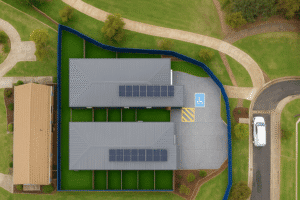
Not Everyone Starts With a $2M Strategy—And That’s OK
Now, maybe you’re thinking, “I can’t afford to do a $2 million deal.” Fair enough. Most people can’t at first. But this approach is scalable. And scalability is one of the most overlooked aspects of property investing.
If you start with a four-bedroom co-living home, or even a three-bedroom version if that’s your budget, the principles still apply:
– Find the right block of land in an established or desirable area
– Design a co-living layout with strong tenant demand and minimal competition
– Get the tenancy mix right
– Build for quality—not just compliance
Once it’s tenanted and re-valued, you may already have equity to draw on. And you’ll achieve positive gearing from day one. That means more income, better serviceability, and the ability to move faster into the next one.
This is how smart investors build momentum. They don’t wait for years between deals. They create leverage through both equity and income—then do it again.
Growth Alone Can’t Keep Up
Let’s return to that standard house and land package.
Yes, it will grow. The $600,000 you spent in a greenfield estate might become $900,000 in 10 years if the market’s kind. But during much of that time, you’ll probably be negatively geared. You’ll be funding the shortfall each month. And you’ll have little flexibility to scale up or pivot.
Meanwhile, a well-designed co-living investment in an established suburb:
– Delivers positive cash flow immediately
– Creates instant equity upon completion
– Attracts stronger valuations due to high yields
– Can be repeated in shorter cycles due to improved serviceability
Even if the growth potential is slower in the short term, the combination of income and equity uplift puts you miles ahead. And in many cases, the growth is just as strong—or stronger—because you’re in a better suburb to begin with.
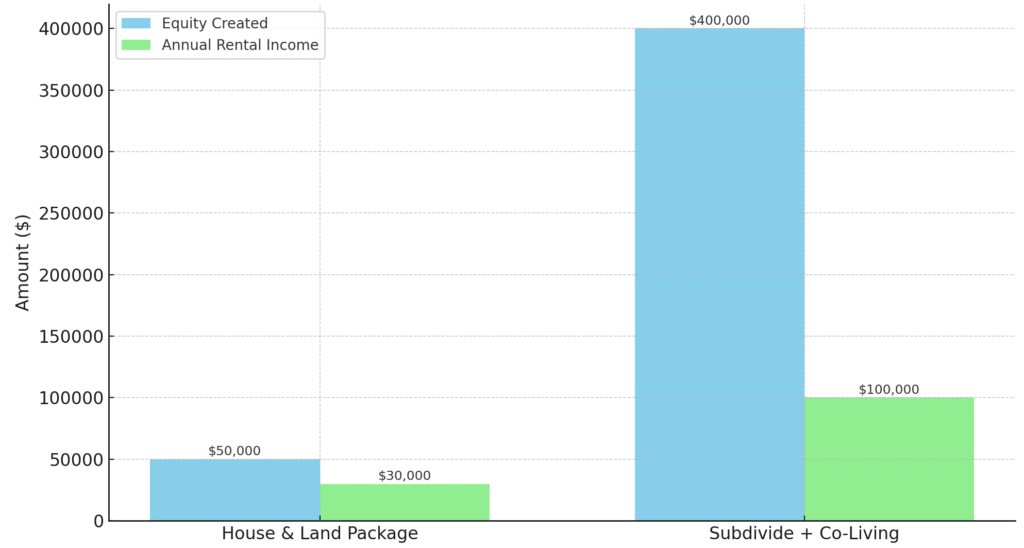
Don’t Expect the Salesperson to Tell You This
The harsh truth is, the people selling house and land packages won’t steer you away from them. Why would they? That’s their product. They’re not in the business of showing you how to do it better—just how to do it with them.
But if you’re serious about creating wealth, you can’t just accept what’s being sold. You need to think like a developer. Think in terms of wealth creation, not product selection. Ask:
– Where is there unmet rental demand?
– What kind of housing is missing in that area?
– Can I build it in a way that’s both profitable and sustainable?
These are not questions your average project marketer will answer. But these are the questions that drive successful investing.
The Smarter, Strategic Way Forward
This isn’t about reinventing the wheel. It’s about taking a more active, intentional approach. There’s still growth in the market, yes—but growth on its own is slow, passive, and unpredictable. When you layer in instant equity and strong cash flow, you change the entire game.
This is what more investors should be aiming for. Not because it’s easy—but because it’s smart. Because it works. And because it scales.
You don’t need to start with millions. You need to start with the right strategy, the right team, and the willingness to go a step beyond the easy option.
Written by Asle Kommedal
Topstone Property Invest

